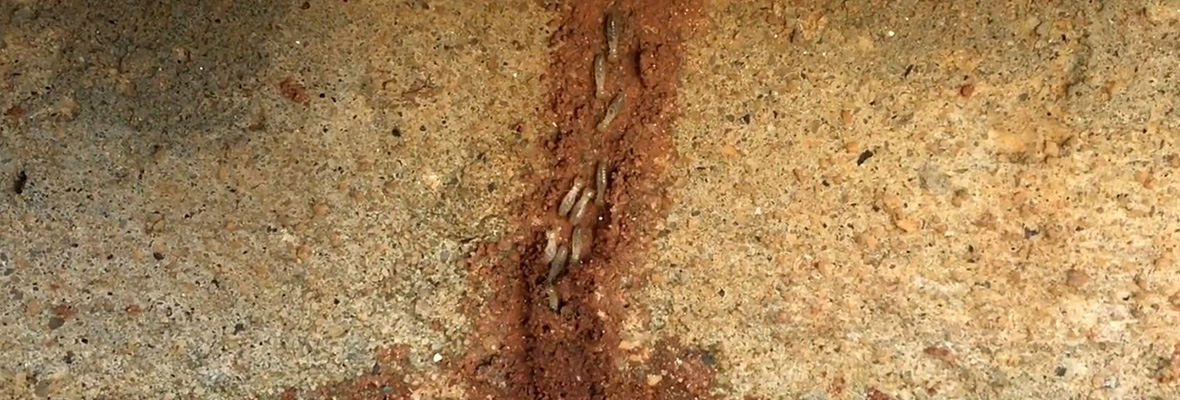Why Termites Are Considered a Pest
When most people discuss termites, they refer to these insects as pests. This title is certainly justified given the extent of the damage that termites can cause to your home or other property. Unfortunately, termites are not only pests, but they are pests that you are unlikely to spot unless you look very closely. Learn more about what makes these insects a pest so you are prepared to take action to keep them away.
The Extent of the Damage
Before delving into the specific actions that lead to termites being classified as pests, consider the extent of the damage they cause. The National Pest Management Association estimates that in the Unite States, termites cause as much as $5 billion in damages. Termites are able to achieve such impressive damage since their nature means they are unintentionally damaging your property all day long every day of the year.

Damage Varies Slightly by Type of Termite
To some extent, the specific damage caused by termites will vary slightly by the specific type of termite you are dealing with. Regardless of the type of termite, however, the damage will be focused on wood.
Why Subterranean Termites Are Pests
Subterranean termites are also called ground termites and they live under the ground. This type of termite mostly feeds on wood and will tunnel as far as 150 feet in search of it. Unfortunately for humans, a common source of wood for subterranean termites is the wood on homes. This type of termite is actually responsible for about 95% of termite damage within North America.
Subterranean termites can show off their well-earned designation as a pest by destroying your home’s support beams, foundation, insulation, plastic pipes, and more. Clearly their appetite extends to more than just wood and other building components can be collateral damage in the quest for wood. To further cement their status as pests, subterranean termite colonies may have as many as a million members and consume up to 15 pounds of wood every single week.
Why Dry Wood Termites Are Pests
Dry wood termites will live above the ground, finding homes in trees or other wood, including homes. They do not require any moisture within their nests as they get it from the air. You are more likely to find dry wood termites in the Southeast U.S. or Southern California.
The problem with dry wood termites stems from the fact that they live within wood and eat it from the inside. They see any type of wood as a good home, whether it is a window frame, door frame, attic, or something else. To make the annoyance with this type of termite pest even worse, since they eat the wood from the inside, you may not notice there is any damage until the wood collapses.
Why Damp Wood Termites Are Pests
As their name implies, damp wood termites prefer to live in decaying and damp wood. The good news is that if your home is in good shape, it will not be damp so damp wood termites will not be major pests. That said, if you have any moisture problems or plumbing issues, then these pests will just make the issue worse by compounding your problems.
Why Formosan Termites Are Pests
The most destructive out of the various types of termites, Formosan termites easily earn a reputation of pests. They arrived in the U.S. from China, making a detour via Taiwan. Scientists think that Formosan termites actually spread across the U.S. via the railroad stakes made from wood. They are most common in Louisiana but you will also find them in multiple other states, including Georgia, South Carolina, North Carolina, California, and New Mexico.
These pests are seemingly everywhere in Louisiana, where they might infest as many as 3 percent of trees. So, there is a reasonable chance that any tree on your property in that state has termites, which could easily transfer to your home and cause damage there. At the very least, they will hurt your tree’s health, hurting your landscape. Formosan termites will also infest other structures with wood as well as cellulose-based goods. If you have a boat, it may also experience damage from these pests.
Reviewing Common Areas of Damage
The common theme across the various types of termites is that these pests will damage the wood on your property, whether it is from the inside or outside. Termites may get into your building via the chips or cracks by the doors and windows. They will also commonly invade decks and porches made from wood since these come into easy contact with the soil.
Termites can also damage wood paneling within your home as well as furniture, both that made of wood and non-wood furniture. They may also damage carpets and drywall.
Structural Damage Can Make Termites Worse Than a Pest
Depending on your definition of a pest, termites may actually go above and beyond in some cases. The seemingly minor damage caused by termites can quickly get out of hand if they are left unchecked, especially in the case of a large colony. It is unfortunately common for termites to cause structural damage. You may need to repair your roof support beams, floor, wall studs, or foundation.
Go back to the Home Pest Control home page or email us for more info about Why Termites Are Considered a Pest

